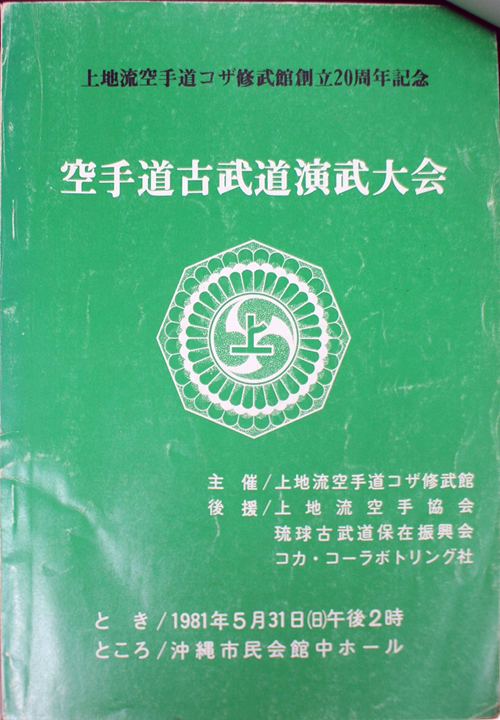I published a number of articles related to the tradition of Tsuken before. Here is another piece I once copied in a Okinawan dōjō. The text is as follows.
Tsuken Sunakake
It is said that Master Tsuken was defeated during the internal squabble over headship rights under King Shō Gen (r. 1556–1572), and with a stone weighing more than 150 kg attached to him was sunk at Tsuken current, the place with the strongest currents between Tsuken and the main island.
In reality, however, it is said that he hid in Tsuken Pēku Cave in the north of Tsuken Island and taught martial arts to Tsuken Akan’chū. Therefore, [to protect his master from being found,] it is said that Akan’chū never mentioned the name of his master throughout his life, and instead called his style the style of the people of God.
This story is based on the tradition of Tsuken Uēkata Seisoku, who is said to have taught bōjutsu to a certain Tsuken Akan’chū. The oldesst variant says that the technique was called Tsuken-bō, of which there are several versions. More recently, the technique called Tsuken no Kon is also associated with it. Moreover, from the name of the persons, it appears obvious that the technique called Tsuken Akan’chū no Uēku-dī is a direct transmission of this old tradition.
From the above entry of 1981, it is obvious that the technique called Tsuken Sunakake no Uēku-dī is also being associated with the tradition of Tsuken Akan’chū.
All of the techniques are decidedly different kata. Also, researchers concluded that it is impossible that Tsuken Akan’chū received direct personal instruction from Tsuken Uēkata.
Because of these facts, and because the Okinawan schools developed plenty of methods in the post-war period without precisely documenting who did what and when, it is not possible to further break down how the individual techniques came about or whether they are an actual tradition of Tsuken Island or not, or whether they may have been derived from a village bōjutsu, or when exactly they were developed and by whom, or whether the name Tsuken was simply chosen because it provided historical reference without any actual connection being demonstrable. Also, since different Okinawan accounts are often contradictory, there is little hope that they will help in solving anything.
In any case, and while this is an opinion seldom if ever heard these days, it can be that Tsuken Sunakake no Uēku-dī of the Taira lineage is actually associated with the tradition of Tsuken Akan’chū in particular, or with bōjutsu of Tsuken Island in general.
Sources:
- Karate-dō Kobudō Enbu Taikai. Uechi-ryū Karate-dō Koza Shūbukan 20 Anniversary Commemoration. Okinawa City, Central Town Hall, May 31. 1981.
© 2023, Andreas Quast. All rights reserved.

